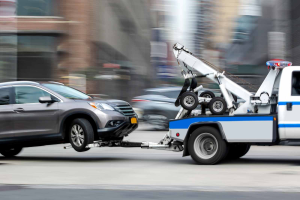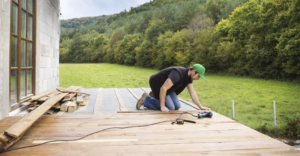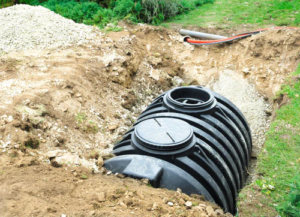Many people have been victimized by predatory towing operators. Exorbitant fees, false parking tickets, and cars hauled away for no reason at all are just some of the horror stories.
It’s important to follow safety protocols recommended by roadside assistance providers and law enforcement. This includes activating hazard lights, setting up reflective triangles or flares, and following safe hours of service guidelines. Contact Azteca Towing now!

Vehicle breakdowns can be a huge hassle. Not only do they put you in a difficult position physically, but they can also have major impacts on your business, productivity, and customer satisfaction. In addition, they can lead to increased costs for repair and replacement vehicles, lost work hours, and delays in delivery schedules. Fortunately, with proper maintenance, breakdowns can be avoided.
The first thing to do when a breakdown occurs is to remain calm and assess the situation. If possible, try to move the vehicle to a safe location off of the road. This may be the shoulder, a designated breakdown lane, or a public parking lot. If your car is not able to be moved, turn on the hazard lights so that passing drivers can see you and exercise caution.
In most cases, a vehicle breakdown is caused by problems with tires, batteries, and brakes. The simplest way to avoid these issues is through regular tire inspections, and by ensuring that your tires are properly inflated at all times.
Another common cause of breakdowns is a low battery charge, which can often be prevented by keeping a spare battery on hand. Regular maintenance can also help prevent these problems, including cleaning terminals and checking the battery charge regularly.
Lastly, the suspension system of your vehicle can be a common source of breakdowns. This is because the extra weight of a trailer can cause these components to wear down faster. To avoid this, it is best to have the suspension system inspected before towing.
Ultimately, preventing vehicle breakdowns requires a combination of prevention and response strategies. Preventive maintenance includes regular inspections, oil changes, and other routine maintenance tasks. Emergency maintenance includes diagnostic services, repairs, and overhauls. Performing these tasks can help minimize the risk of breakdowns, which in turn can reduce towing costs and other expenses. In addition, it is a good idea to keep an emergency kit in your vehicle, including water, food, a flashlight, a first aid kit, jumper cables, a toolkit, a basic vehicle battery charger, a tire pressure gauge, and hazard cones with reflectors.
Roadside Emergencies
A road trip can be a thrilling adventure, but it can turn into a nightmare in the blink of an eye. No one can predict what will happen on the road, from engine problems to flat tires. When the unexpected happens, having a plan for how to proceed can help you stay safe and get back on track quickly.
Luckily, many common car emergencies are preventable by keeping up with your vehicle maintenance schedule and driving responsibly. However, unforeseen incidents can still arise, so it’s important to prepare for the worst by having a reliable towing service on your side. Towing companies are equipped to handle a variety of roadside emergencies, from changing a tire to jump-starting a dead battery. They also offer fuel delivery and other convenience services, helping drivers get back on the road as soon as possible.
Many people rely on their vehicles to travel for work, school, and other everyday activities. But, when a problem occurs, it can cause significant disruption in your day-to-day routine. Fortunately, there are numerous ways to mitigate the impact of an emergency on your road trip, from staying calm to turning on your hazard lights. In addition to these steps, having a roadside assistance plan can help ensure you never have to be stranded for long.
When an accident occurs, it’s critical that the scene be cleared promptly to facilitate a smooth flow of traffic and enable life-saving services to reach injured individuals without delay. Towing companies play a vital role in addressing this need by quickly clearing the roadways and facilitating the removal of wrecked vehicles.
If you’re in a situation where you need to call for roadside assistance, it’s important to remain safe while waiting on help to arrive. Pull over in a safe location, away from traffic and the edge of the road, and make sure to keep your hazards on to warn other drivers. It’s also a good idea to have a blanket, water, and snacks in your vehicle, in case you are stuck for an extended period of time.
Accidents
Accidents involving tow trucks can cause serious injury. Some of these accidents are due to faulty equipment on the truck, while others are caused by the driver. Regardless of the cause, it is essential that victims contact a legal team as soon as possible. A lawyer can help them assess the damages and pursue compensation from the liable party.
The first step in a tow truck accident case is to determine the cause of the crash. Faulty equipment on a tow truck is one of the most common causes of an accident, since it increases the risk that a towed vehicle will fall off during transportation. This can result in catastrophic injuries such as traumatic brain injury and internal bleeding.
Other common causes of tow truck accidents are driver error and fatigue. Tow truck drivers often have to work long hours and are frequently on call, which can make them tired and prone to mistakes. In addition, they may also be under pressure to complete a task quickly. This can lead to them speeding or disregarding traffic laws, as well as other safety measures.
Fatigued drivers are especially dangerous because they have trouble staying awake and have a hard time controlling their vehicles. They are more likely to miss signs and lane markings, and they may swerve into other lanes of traffic. Fortunately, this can be avoided by learning how to recognize signs of fatigue and being careful when driving near a tow truck.
While accidents involving tow trucks are rare, it is essential that drivers pay attention to the vehicles around them and avoid distracted driving. It is also important to understand how each type of towing method works and how to properly secure the vehicle to prevent it from crashing into other cars on the road.
In addition, it is wise to review your auto insurance policy and consider additional coverage for a towed vehicle or damage caused by the tow truck. Many auto insurance companies offer comprehensive or collision coverage, which can cover repairs to your car and the cost of a tow truck if you’re at fault in an accident.
Storage
Storage is the act of keeping an item at a place until it is needed. This can be done in the physical or digital world. In the physical world, objects like vehicles need to be stored in a safe location so they are ready for use when needed. Digital items like data also need to be stored until it is needed. This allows it to be easily accessed.
In the case of vehicles, trailers and boats, the National Self-Storage Association (SSA) has worked to update many state laws to allow for a towing option in lieu of lien sale. However, each of these state laws stipulates unique obligations for the self-storage operator. It is critical to review and comply with the requirements of your specific law to avoid statutory violations.
Another issue is that removal of any vehicle, watercraft or trailer from a storage facility does not release the operator’s lien in the personal property. For this reason, it is best to install a bypass system to separate the trailer wiring from the car’s lighting harness so that a failure in the wiring does not cause damage to the vehicle. These systems are widely available and range from “universal” (non vehicle-dedicated) to OEM-installed systems.


